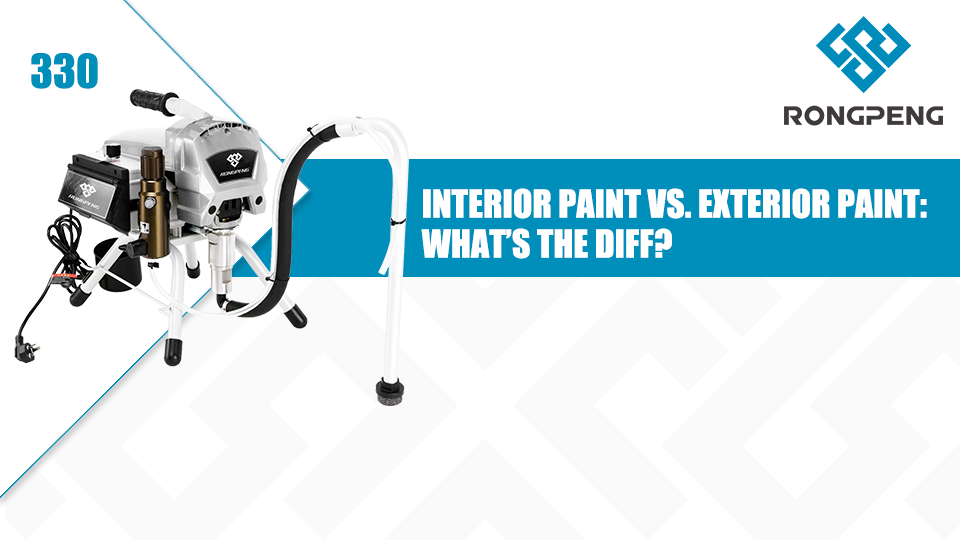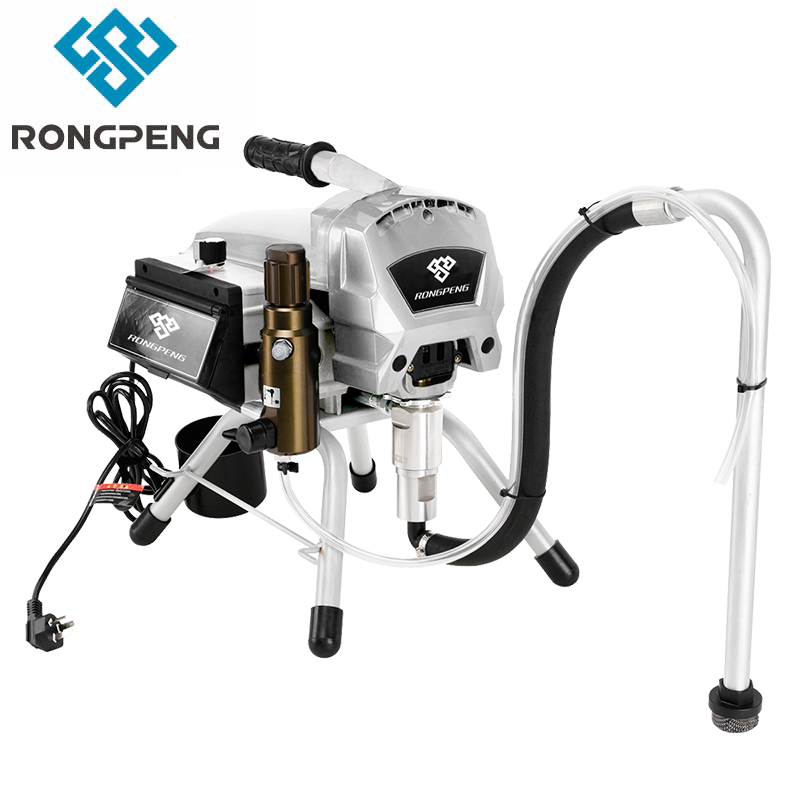

All paint is made of the same basic ingredients: solvent, resin, additives, and pigments. Solvents are typically water for latex paint and mineral spirits for oil paint – but in both cases, the solvent is what evaporates as the paint dries, leaving behind the resin, pigment, and additives. Like interior paints, exterior paints come in different finishes from gloss to matte.
RONGPENG LATEST HIGH QUALITY AIRLESS SPRAYER 330 can meet your requirement of interior and exterior paint.The machine Nano technological piston and Stainless steel sealed pump body designis more durable.
| Voltage Frequency:220V/50Hz |  |
| Motor Size:2.1 HP(1600W) | |
| Flow Rate: 2.2 LPM | |
| Standard Nozzle Size: 519 | |
| Max Nozzle Size: 0.023" | |
| Length of High Pressure Hose:15m | |
Paint outlet connector :1/4-18-NPSM | |
Net Weight:16.6kg |
Interior and exterior paints have similar solvents and pigments, though some pigments fade faster than others and so are more commonly used in interior formulations. Exterior paint may also contain more pigment. But the real difference between them can be found in the additives and the resin.
Exterior paints need to be able to stand up to all kinds of weather conditions, from changing temperatures to UV rays to salty sea breezes and more. To compensate for the variable temperature conditions that paint on exterior walls will experience, exterior paint contains flexible resins that keep paint looking good when the surface underneath expands and contracts. Exterior paint also contains additives that help prevent fading, stop mildew, and resist tannin staining.
Interior paint doesn’t get rained on and will likely never be subject to a big freeze, so it is made with more rigid resins.
These resins make interior paint less prone to damage from scuffing and also easier to clean.
Some people assume that because exterior paint has to stand up to more abuse that it will perform better indoors, too. But that’s actually not true! Exterior paint is, surprisingly, more prone to scuffing and scratches. It’s also typically going to release more VOCs (volatile organic compounds) as it cures and even after it’s done curing – making it less healthy for indoor use. Mildewcides and fungicides in exterior paint can also have an odor on humid days and may even trigger allergies!
The number one piece of advice we can offer homeowners is to use the right paint for the project like the pros do.
Different paint formulations are recommended for different applications for a reason,and the sprayer is apparently important– The 330 will give you the best results!